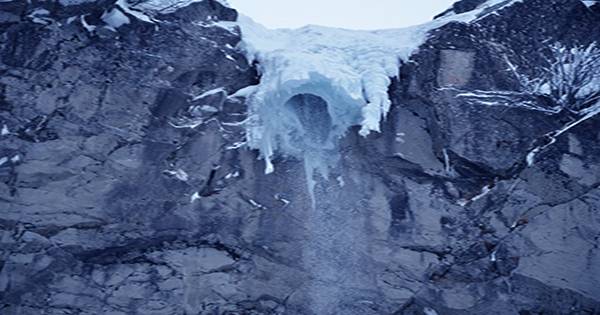Thermal Pollution, sometimes called “thermal enrichment,” is defined as a sudden increase or decrease in temperature of a natural body of water which may be ocean, lake, river or pond by human influence. This normally occurs when a plant or facility takes in water from a natural resource and puts it back with an altered temperature. Usually, these facilities use it as a cooling method for their machinery or to help better produce their products.
Typically, the man-made process that generates the heat that warms the body of water is electricity production at a power plant. As the power plant operates, massive amounts of heat are produced to boil water into steam, which is then forced through pipes in order to spin the turbine that produces electricity. The heat then must be removed from the plant, often by pumping the heated water into a nearby body of water. Depending on the surrounding environment, this thermal pollution can either be good or bad.
When the water used as a coolant is returned to the natural environment at a higher temperature, the sudden change in temperature decreases oxygen supply and affects ecosystem composition. Fish and other organisms adapted to a particular temperature range can be killed by an abrupt change in water temperature (either a rapid increase or decrease) known as “thermal shock.”
Urban runoff stormwater discharged to surface waters from roads and parking lots can also be a source of elevated water temperatures.
Causes of Thermal pollution –
A common cause of thermal pollution is the use of water as a coolant by power plants and industrial manufacturers. Other causes of thermal pollution include soil erosion. Thermal pollution also has some natural causes. Geothermal vents and hot springs introduce excess heat into bodies of water.
- Water as a Cooling Agent in Power, Manufacturing, and Industrial plants: Production and Manufacturing plants are the biggest sources of thermal pollution. These plants draw water from a nearby sources to keep machines cool and then release back to the source with higher temperatures. When heated water returns to the river or ocean, the water temperature rises sharply. When oxygen levels are altered in the water, this can also degrade the quality and longevity of life in wildlife that lives underwater. This process can also wipe away streamside vegetation, which constantly depends on constant levels of oxygen and temperature. By altering these natural environments, industries are essentially helping decrease the quality of life for these marines based life forms and can ultimately destroy habitats if they are not controlled and careful about their practices.
- Soil Erosion: Soil erosion is another major factor that causes thermal pollution. Consistent soil erosion causes water bodies to rise, making them more exposed to sunlight. The high temperature could prove fatal for aquatic biomes as it may give rise to anaerobic conditions.
- Deforestation: Trees and plants prevent sunlight from falling directly on lakes, ponds or rivers. When deforestation takes place, these water bodies are directly exposed to sunlight, thus absorbing more heat and raising its temperature. Deforestation is also the main cause of the higher concentrations of greenhouse gases i.e. global warming in the atmosphere.
- Runoff from Paved Surfaces: Urban runoff discharged to surface waters from paved surfaces like roads and parking lots can make the water warmer. During summer seasons, the pavement gets quite hot, which creates a warm runoff that gets into the sewer systems and water bodies.
- Natural Causes: Natural causes like volcanoes and geothermal activity under the oceans and seas can trigger warm lava to raise the temperature of water bodies. Lightening can also introduce a massive amount of heat into the oceans. This means that the overall temperature of the water source will rise, having significant impacts on the environment.
However, thermal pollution can be beneficial to some species. Bacteria and algae tend to benefit from excess heat. Some larger animals also benefit from the warmer water. In Florida, manatees spend the winter near power plants, where the cooling water they use warms up the shallow saltwater. On balance, thermal pollution is a negative force for many reasons.
The Effects of Thermal Pollution –
The effects of thermal pollution are diverse, but in short, thermal pollution damages water ecosystems and reduces animal populations. Plant species, algae, bacteria, and multi-celled animals all respond differently to significant temperature changes. Organisms that cannot adapt can die of various causes or can be forced out of the area. Reproductive problems can further reduce the diversity of life in the polluted area.
The effects of thermal pollution on ecosystems, however, greatly outweigh the benefits that industries have by participating in the act.
- Decrease in DO (Dissolved Oxygen) Levels: The warm temperature reduces the levels of DO (Dissolved Oxygen) in water. The warm water holds relatively less oxygen than cold water. The decrease in DO can create suffocation for plants and animals such as fish, amphibians, and copepods, which may give rise to anaerobic conditions. Warmer water allows algae to flourish on the surface of the water and over the long term growing algae can decrease oxygen levels in the water.
- Migration: Fish and amphibians may move away from the warm water to a more suitable location, disrupting the ecosystem for animals that remain. Birds may also be forced to leave in search of areas with more food. Plants and certain animals will be stuck in the area, which can lead to huge losses. Migration away from the polluted area contributes to a dramatic loss of biodiversity at sites where thermal pollution happens.
- Increased Toxins: Toxins in the water are more a side effect of dumping wastewater than a direct effect of thermal pollution. Chemical pollution is an almost inevitable side effect of using water for cooling. Solvents, fuel oil, and dissolved heavy metals end up in the lake or river where the cooling water gets dumped. Nuclear power plants can also release slightly radioactive cooling water. The chemicals may have a range of toxic effects on plants and animals, from fatal poisoning to mutations and sterilization.
- Loss of Biodiversity: A dent in the biological activity in the water may cause a significant loss of biodiversity. Changes in the environment may cause certain species of organisms to shift their base to some other place while there could be a significant number of species that may shift in because of warmer waters. Organisms that can adapt easily may have an advantage over organisms that are not used to the warmer temperatures.
- Ecological Impact: A sudden thermal shock can result in mass killings of fish, insects, plants or amphibians. Hotter water may prove favorable for some species while it could be lethal for other species. Small water temperature increases the level of activity while higher temperature decreases the level of activity. Many aquatic species are sensitive to small temperature changes such as one degree Celsius that can cause significant changes in organism metabolism and other adverse cellular biology effects.
- Affects Reproductive Systems: A significant halt in the reproduction of marine wildlife (although this may be true, reproduction can still occur between fish but the likelihood of defects in newborns is significantly higher) can happen due to increasing temperatures as reproduction can happen within a certain range of temperature. Excessive temperature can cause the release of immature eggs or can prevent the normal development of certain eggs.
- Increases Metabolic Rate: Thermal pollution increases the metabolic rate of organisms as increasing enzyme activity occurs that causes organisms to consume more food than what is normally required if their environment were not changed. It disrupts the stability of the food chain and alters the balance of species composition.
Releases of unnaturally cold water from reservoirs can dramatically change the fish and macroinvertebrate fauna of rivers, and reduce river productivity. In Australia, where many rivers have warmer temperature regimes, native fish species have been eliminated, and macroinvertebrate fauna have been drastically altered. This may be mitigated by designing the dam to release warmer surface waters instead of the colder water at the bottom of the reservoir.
The most important thing to consider is that the effect of thermal pollution greatly outweighs the human need for it to be done. Plants and industries have been able to find successful ways around thermal pollution, but many of them are not practicing it because it’s simply easier to work from the traditional model. If we want to promote the thriving environment that surrounds marine biology, then the attitude around thermal pollution needs to take a drastic turn. By being aware of the causes and effects, we can have a significant impact on how these plants choose to operate and we can opt to make the change.
Information Sources:
















